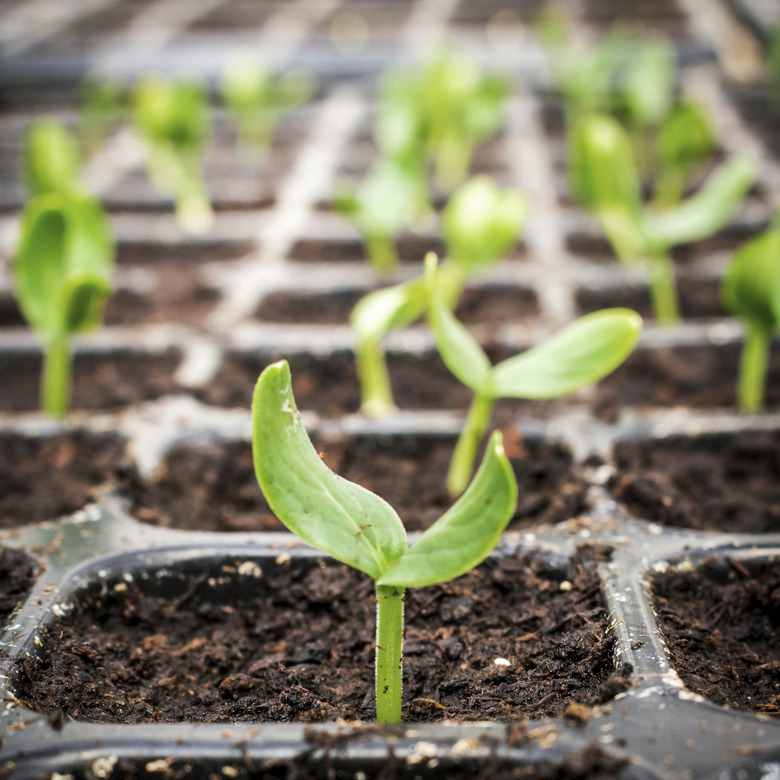DIY Heating Pad For Germinating Plants
Most seeds require heat to germinate, particularly warm-weather annuals such as garden tomatoes (Solanum lycopersicum) and petunias (Petunia x hybrida), which only germinate in temperatures between 70 and 80 degrees Fahrenheit.
Things Needed
- Plywood plank, 1 inch by 12 inches by 4 feet
- 2 wood furring strips, 1 inch by 2 inch by 8 feet
- #6 wood screws, 1 1/2 inches
- 18-foot incandescent rope light for outdoor use
- Cable staples
- Tape measure
- Hand saw or jigsaw
- Hammer
- Sandpaper
Most seeds require heat to germinate, particularly warm-weather annuals such as garden tomatoes (Solanum lycopersicum) and petunias (Petunia x hybrida), which only germinate in temperatures between 70 and 80 degrees Fahrenheit. Even after the seeds have sprouted, little seedlings often need additional heat when you start them early in the year. Bottom heat is typically recommended for supplying additional heat, either in the form a commercially available heating pad designed for seed starting or as part of a do-it-yourself project.
Step 1
Cut the furring strips into four 40-inch lengths. Use sandpaper to smooth out any rough edges.
Step 2
Space 40-inch furring strips evenly across the plywood plank, 4/5 inch apart and 4/5 inch in from each side of the plank.
Step 3
Attach the furring strips to the plank using wood screws. Place one wood screw 1 inch in from each end of the strips, and three more screws about 12 inches apart down the length of each strip.
- Most seeds require heat to germinate, particularly warm-weather annuals such as garden tomatoes (Solanum lycopersicum) and petunias (Petunia x hybrida), which only germinate in temperatures between 70 and 80 degrees Fahrenheit.
- Cut the furring strips into four 40-inch lengths.
Step 4
Remove the 18-foot rope light from the package and uncoil it. Straighten the rope light out so it's easier to work with.
Step 5
Place the end of the rope light without the plug at one corner of the board. Run the rope light down along one side of the first furring strip and back up the other side. Continue running the rope along the sides of each furring strip, in a winding position, until you get to the end of the last one.
Step 6
Secure the rope lights with cable staples. Hammer each staple in far enough to hold the lights, but not enough pinch them or cause an indentation.
- Remove the 18-foot rope light from the package and uncoil it.
- Continue running the rope along the sides of each furring strip, in a winding position, until you get to the end of the last one.
Step 7
Plug in the rope lights, and place seed flats on top of the furring strips. The lights will take approximately 35 to 40 minutes to fully heat up.
Tip
Do not use LED rope lights instead of incandescent lights. They do not generate enough heat to start most seeds.
Most plants germinate best in a temperature range between 65 and 75 degrees F. Use a soil thermometer to check the temperature, and unplug the rope lights if the soil gets too hot.
Warning
Use only rope lights designed for outdoor use. Indoor rope lights are not waterproof.
References
- Michigan State University Extension: Selecting and Starting Seeds Indoors
- The Backyard Gardener: Starting From Seed
- Vegetable Gardener: DIY Heat Mat Speeds Seed Starting
- University of Kentucky: Starting Plants From Seed at Home
- USDA Plant Profile: Solanum Lycopersicum
- Texas Tech University: Petunia x Hybrida
